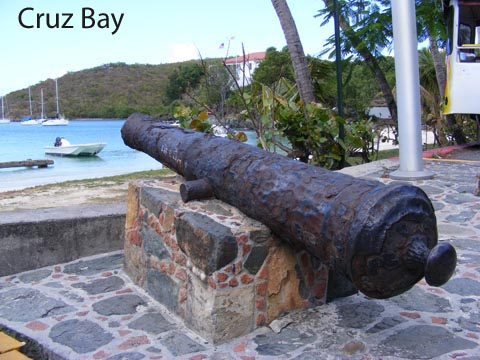
The purpose of this posting is to convince you to take a vacation to the Virgin Islands and to do some snorkeling.
We were lucky in our travel arrangements. Last year we flew through Atlanta. This year, when we flew through Miami, Atlanta was closed by snow.
The Virgin Islands airport is on St. Thomas. Arrivals are a little more laid back that in most airports on the mainland. Here you can sip your rum drink while waiting for your luggage to be delivered.

We stayed at Maho Bay Campgrounds again. The camp is located a hillside on Little Maho Bay. Our tent-cottage was conveniently located near the restaurant and the bathroom. We were 231 steps up from the beach, but survived the exercise. The staff here is quite friendly and helpful. Other residents are also friendly. We hung out a lot with a couple from Philadelphia with whom we shared a ride on an island taxi (a pickup with benches installed in the bed) from Cruz Bay. We also socialized with the couple who had been our neighbors at the camp last year.
| West end of Little Maho beach, with some cabins visible among the trees | Gail in the kitchen area of our tent-cottage |
|---|---|
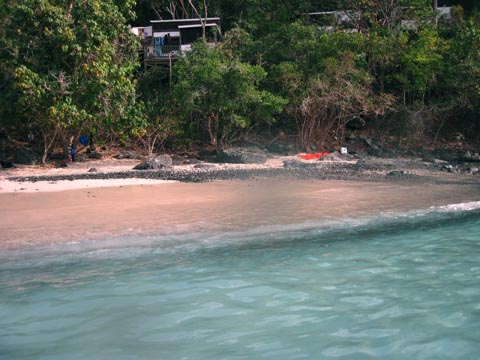
|

|
Every evening there was something to do at the camp. The night we arrived there was a band playing after dinner. There are also glass blowing demonstrations, slide shows about nature and the island, movies, and even a star gazing walk. During the days you can do yoga, get a massage, and take pottery, painting or glass blowing classes.
We were there for snorkeling on the fringing reefs of the island and its cays. We snorkeled at Maho Bay, Waterlemon Bay, Hansen Bay and Hawksnest Bay. We also took a sailboat ride on the 23' island sloop Pepper to snorkel at Whistling Cay.
Our first full day on the island, we walked to the Annaberg Sugar Mill ruins, which overlook Leinster and Waterlemon Bays. This mill had been prosperous in the early to mid 1800s, when Denmark owned the islands.
| Ruins of the windmill at the sugar mill | Leinster Bay with Waterlemon Cay, and in the background, Little Thatch Island and Tortola in the British Virgin Islands |
|---|---|
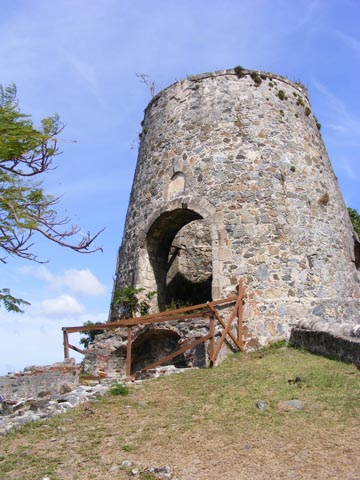
|

|
Just before we left on vacation I purchased a Canon Power Shot D10 waterproof camera to use instead of the discardable film cameras we used last year. I used the new camera to take over 400 photos, most of them in the water.
We saw a shark, a couple of barracudas, sea stars, green turtles, a hawksbill turtle, an octopus, porcupine fishes, a spotted eagle ray, and at least 25 other types of fish that I've identified. I have photos of seven fish that are very distinctive looking, but which I cannot yet identify. And I have photos of lots of different kinds of coral, sponges, sea cucumbers, urchins, anenomes and more.
Because of the wave action, the water was murkier than I remembered. In order to make the images more clearer, I have used Photoshop Elements to stretch the contrast on many, but not all, of the photos below. For an example of what this looks like, here is an original photo of the spotted eagle ray next to the processed image.
| Spotted Eagle Ray swimming at the bottom of murky water in Hawksnest Bay | Spotted Eagle Ray photo after Photoshop Elements was used to improve the contrast |
|---|---|

|
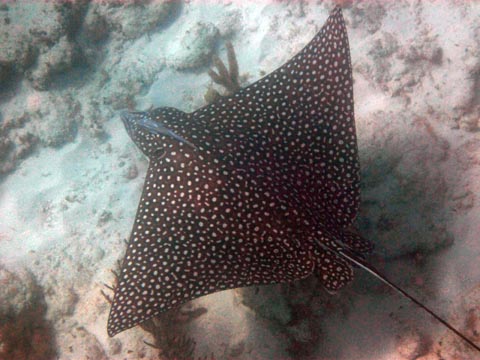
|
| Common octopus at Maho Bay | Juvenile Yellowtail Damselfish at Hansen Bay |
|---|---|

|
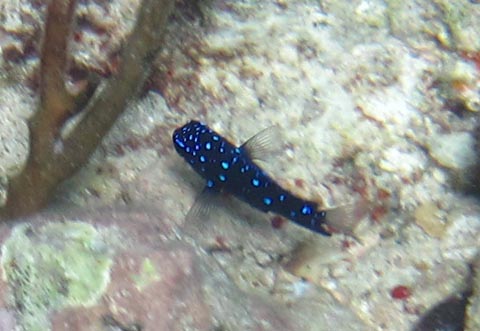
|
| A stand of pillar coral | A snorkeler climbing aboard the sloop Pepper at Whistling Cay |
|---|---|
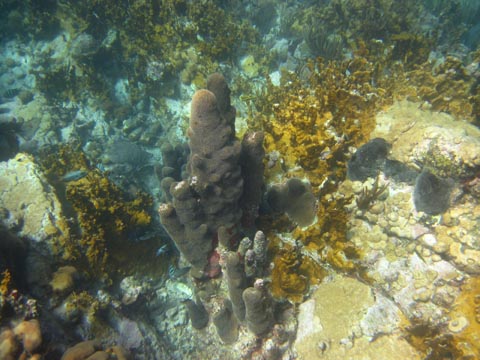
|
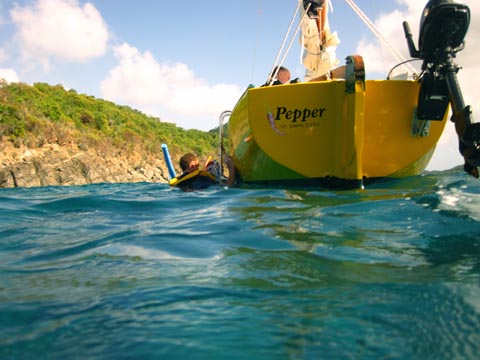
|
| A Lizardfish, probably a Sand Diver, at Maho Bay | Yellowtail Snapper waiting for food under the Pepper at Whistling Cay |
|---|---|
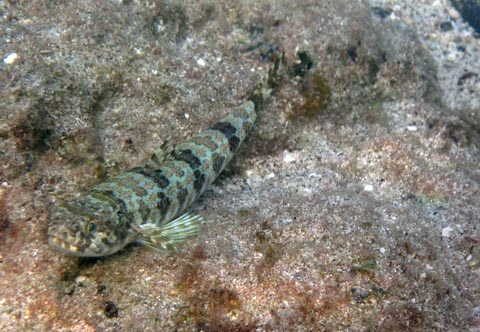
|

|
| Bluehead Wrasse supermale at Hansen Bay | A blue-headed trumpet fish at Whistling Cay |
|---|---|
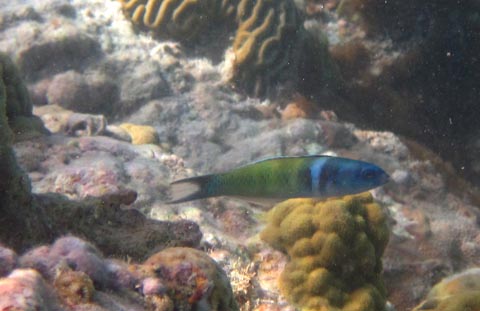
|
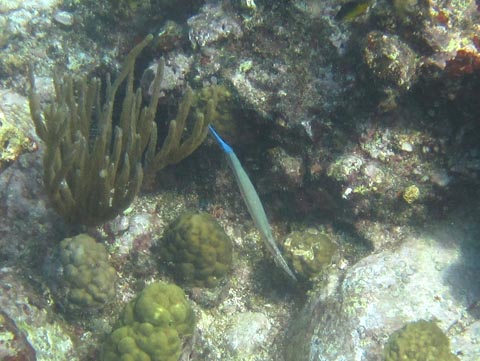
|
| Green turtle in Waterlemon Bay | Cushion Sea Star in Waterlemon Bay |
|---|---|
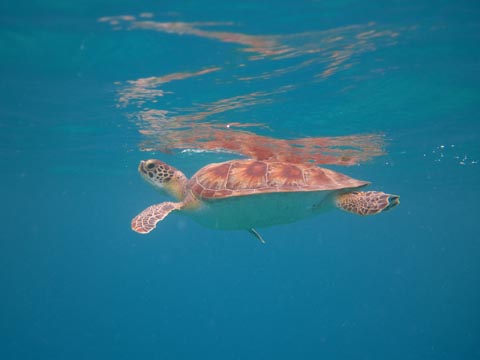
|

|
| A Porcupine Fish and two Foureye Butterflyfish at Whistling Cay | A Rock Beauty at Hansen Bay |
|---|---|

|
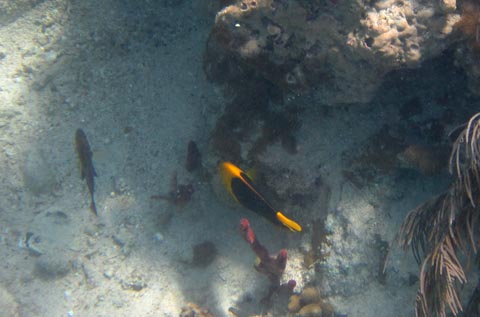
|
| Al on the beach at Waterlemon Cay | Sergeant Majors and French Grunts at Hansen Bay |
|---|---|
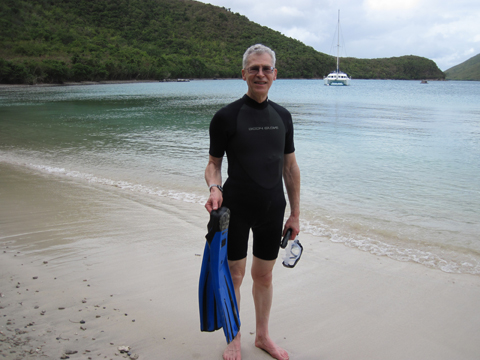
|
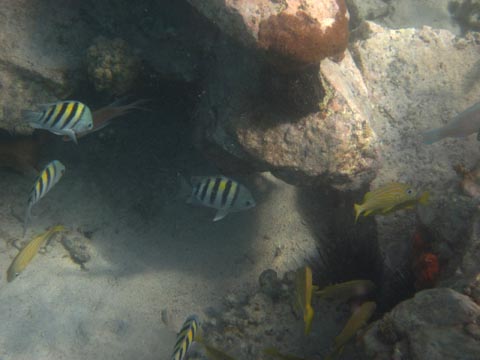
|
Here are three distinctive looking fish that I have not been able to identify definitively yet. The one on the left may be a red hind and the one on the right a cero, but the one in the middle is still a complete mystery.
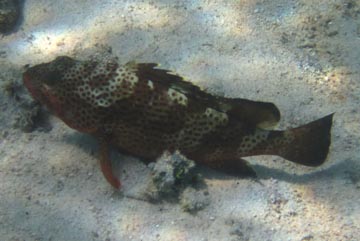
|
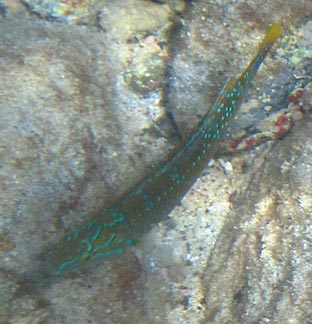
|
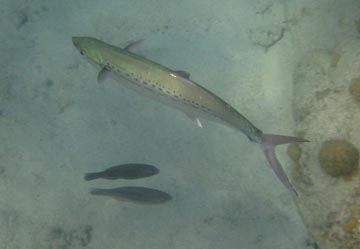
|
Last year I saw a flying gurnard, a very strange looking fish, crawling on the sandy bottom in Francis Bay, but I had run out of film by that time. This trip we saw two smaller flying gurnards lying on the bottom at the boundary between Maho Bay and Francis Bay. They were hard to see, but I got their picture.
| Two Flying Gunards | Flying Gunards Outlined for visibility |
|---|---|
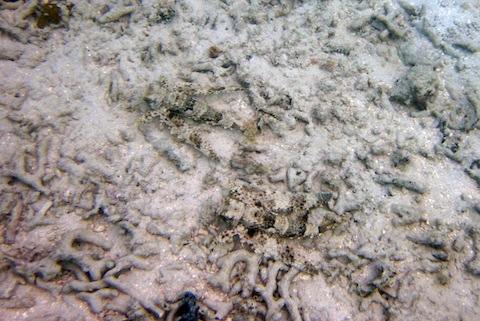
|
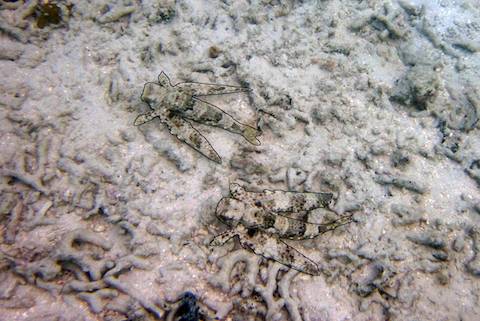
|
We enjoy seeing the birds as well as the fish. The Bananaquit is the official bird of the Virgin Islands. Each morning the camp staff filled a feeder next to the restaurant and a large flock gathered. This bird is very quick moving and it is hard to get a well-focused image of one. We also saw a lot of pelicans, a little blue heron, a great egret, magnificent frigatebirds and more.
| Bananaquits crowding around the feeder at Maho Bay Camp | Brown Boobies sitting on a rock in Hansen Bay |
|---|---|
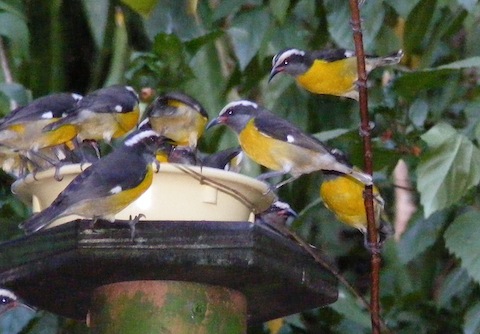
|
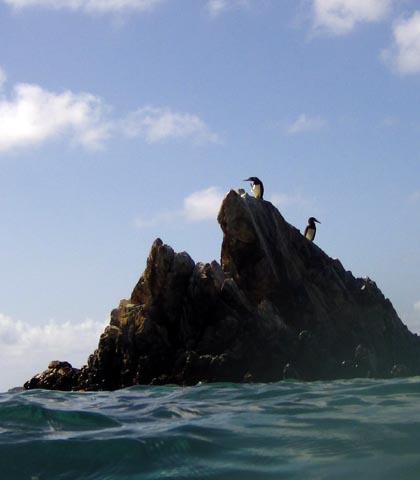
|
You also don't know who will find you. During that last swim, this little fish, less than an inch long, began to follow us. It stayed with us for about a half hour until we went ashore.
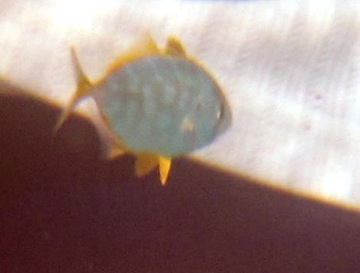
If you decide to vacation on St. John or even move there permanently, get in touch and we'll share more of our experiences.
